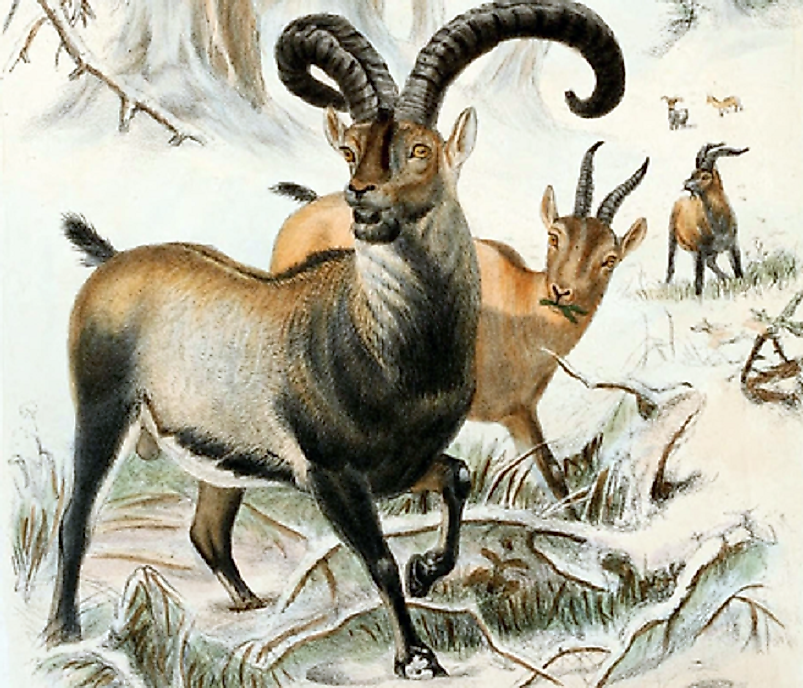What Does Extinction Mean?

What Exactly is Extinction?
Biologically, extinction is defined as the termination of a species either due to environmental causes (e.g. global climate change, exploitation by humans, or a catastrophic natural disaster) or evolutionary changes (e.g. genetic inbreeding, weak offspring, poor reproductive capacity, etc.).
Conservation Status
In cases where extinction is not triggered by a sudden, massive, natural calamity like an asteroid impact that completely wipes off species from the face of the Earth, the process of extinction usually takes place in stages. To determine the stage of extinction of a species, their conservation status is divided into 9 categories in the IUCN Red List of Threatened Species. Those species whose conservation status is yet to be determined are placed under the ‘not evaluated’ or ‘data deficient’ categories. The species whose conservation status has been estimated, but there is not much to be concerned about, are placed in the Least Concern category of the list. However, the species with declining populations, facing threats to future survival, are placed under the categories of Near Threatened, Vulnerable, Endangered, and Critically Endangered, in order of increasing magnitude of threat. After this, if all efforts to conserve the species fail, it becomes Extinct in the Wild (given some individuals are still alive in captivity) and then completely Extinct when a species is utterly lost for all time.
Mass Extinction Events of the Past
Extinction is not a new occurrence in Earth’s long history of life. Extinction is an ongoing feature on our planet, wherein flora and fauna are continuously being lost due to a diversity of factors. However, there are certain time periods in the Earth’s history when large scale die-offs of species have occurred, and conspicuous declines in biodiversity have taken place. Such periods are known as the mass extinction events. Fossil records yield most of the data regarding these events and to this very date, scientists have recorded five mass extinction events on Earth. These are the Permian Extinction, the Ordovician-Silurian Extinction, the Cretaceous-Tertiary Extinction, the Late Triassic Extinction, and the Devonian Extinction. Scientists predict that the loss of the dinosaurs occurred during the third mass extinction event (the Cretaceous-Tertiary Extinction), and that thus was possibly triggered by the impact of a comet or asteroid hitting the Earth.
In the Shadow of the 6th Mass Extinction
All of the above mentioned past extinctions were attributable to a complex array of adverse natural factors, such as volcanic eruptions, asteroid strikes, or drastic alterations in Earth’s climate, that have led to a demise of life forms on Earth. However, never before in Earth’s history has one species been held responsible for any of the past mass extinction events. Presently, however, the burgeoning human population, predicted by some to reach 10 billion by 2050, has completely devastated many of the Earth’s ecosystems, killing off their species at an extremely rapid rate. With human-induced extinction rates being 1,000 times greater than the reference natural extinction rate, a section of the planet’s scientific world is claiming that humans have started the process of the sixth mass extinction on Earth. In the paleo-tropics, more than four-fifths of the countries have lost more than half of their wildlife habitats, and it is predicted that 5.2% species of the Earth would be completely eliminated if world average temperatures were to rise by only 2° Celsius.
What Have We Already Lost?
Some of the animals lost forever due to human activities in the last two centuries have included the West African Black Rhinoceros (extinct in 2011), Pyrenean Ibex (extinct in 2000), Passenger Pigeon (extinct in 1914), Quagga (extinct in 1883), the Tasmanian Tiger (extinct in 1936), and numerous others. Since 1900, about 69 mammalian and 400 other vertebrate species have been lost forever. Currently, a large number of flora and fauna suffer a threatened status
What Can We Do?
We all need to do our own part to save the Earth’s species from the sixth mass extinction. Here are just a few measures that we can take:
- Reduce our carbon footprints (16% of the planet's species would be lost if surface warming increased to about 4.3 °Celsius)
- Reduce intakes of meat (animal agriculture is a leading cause of species extinction, greenhouse emissions, and habitat destruction).
- Reduce our intake of fish (oceans might become effectively depleted by 2048 due to overfishing).
- Never purchase products derived from threatened species (certain elephants, tigers, rhinos, lemurs, gorillas, and sea turtles have been poached to near extinction in the name of the fashion and jewelry industries).
- Vote for leaders who promise to address climate change and encourage species conservation.
- Adopt a species and become a "citizen scientist".
- Be an advocate and spread awareness among others.











